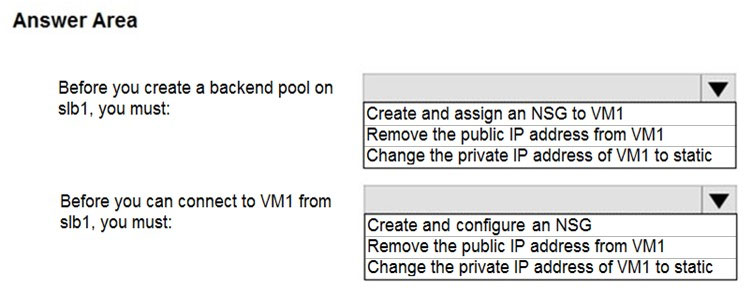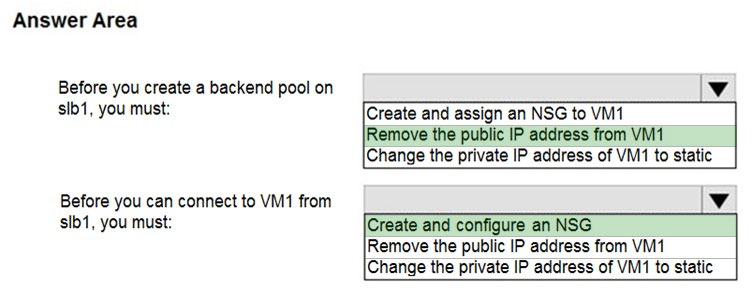

HOTSPOT -
You have an Azure virtual machine named VM1 that connects to a virtual network named VNet1. VM1 has the following configurations:
✑ Subnet: 10.0.0.0/24
✑ Availability set: AVSet
✑ Network security group (NSG): None
✑ Private IP address: 10.0.0.4 (dynamic)
✑ Public IP address: 40.90.219.6 (dynamic)
You deploy a standard, Internet-facing load balancer named slb1.
You need to configure slb1 to allow connectivity to VM1.
Which changes should you apply to VM1 as you configure slb1? To answer, select the appropriate options in the answer area.
NOTE: Each correct selection is worth one point.
Hot Area:

mlantonis
Highly Voted 4 years, 1 month agoSentaSama
2 years, 11 months agomlantonis
4 years, 1 month agoNetspud
3 years, 5 months agoHolydud
2 years, 10 months agoPradh
Highly Voted 3 years, 6 months agoNathan12345
Most Recent 4 months, 2 weeks agoThor0007
5 months, 3 weeks ago0378d43
8 months, 2 weeks agotashakori
1 year, 3 months ago1828b9d
1 year, 4 months agoGanchev
1 year, 9 months agovbohr899
2 years, 4 months agoGBAU
2 years, 4 months agoklexams
2 years, 8 months agoEmnCours
2 years, 10 months agoDumber
2 years, 11 months agoLazylinux
3 years agoScoobysnaks86
3 years agovinsom
2 years, 2 months agoDobby25
3 years, 3 months agojosevirtual
3 years, 3 months ago